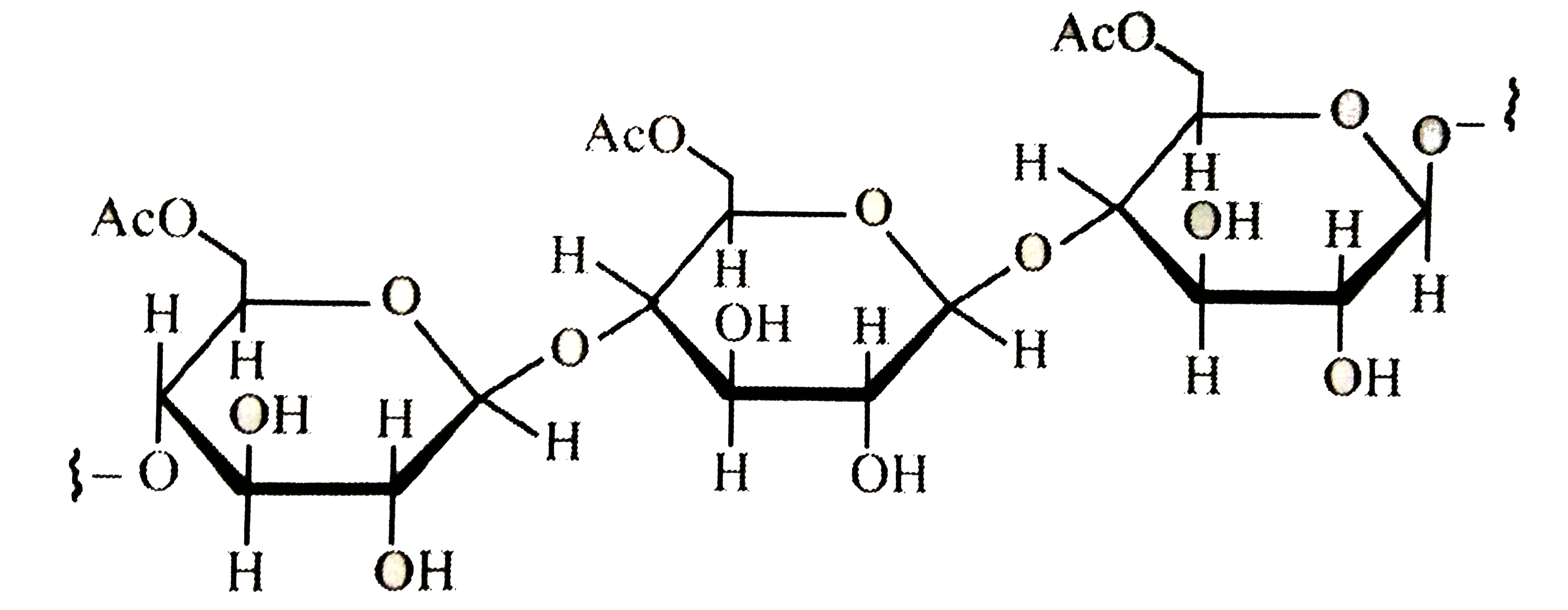On acetylation with acetic anhydride, glucose gives
Diacetate
Hexa-acetate
Pentacetate
Tetra-acetate
The correct Answer is:C
To solve the question "On acetylation with acetic anhydride, glucose gives," we need to understand the process of acetylation and how it applies to glucose. Here’s a step-by-step breakdown of the solution:
Step 1: Understand the Structure of Glucose
Glucose is a monosaccharide with the molecular formula C₆H₁₂O₆. It contains five hydroxyl (–OH) groups attached to its carbon atoms. The structure of glucose can be represented as follows:
- The carbon skeleton consists of six carbon atoms.
- Each of the five hydroxyl groups is attached to the carbon atoms, and one carbon is part of an aldehyde group (–CHO).
Step 2: Identify Acetic Anhydride
Acetic anhydride (CH₃CO)₂O is a reagent used for acetylation. It has the following structure:
- Two acetyl groups (CH₃CO) connected by an oxygen atom.
Step 3: Mechanism of Acetylation
During acetylation, the hydroxyl groups of glucose react with acetic anhydride. The hydroxyl oxygen acts as a nucleophile and attacks the electrophilic carbonyl carbon of acetic anhydride. This results in the formation of an ester bond and the release of acetic acid as a byproduct.
Step 4: Reaction of Glucose with Acetic Anhydride
Since glucose has five hydroxyl groups, each of these –OH groups will react with acetic anhydride. The reaction can be summarized as follows:
- Each hydroxyl group (–OH) is replaced by an acetyl group (–OCOCH₃).
- This results in the formation of a compound known as glucose pentacetate, where all five hydroxyl groups are converted into acetate groups.
Step 5: Final Product
The final product of the acetylation of glucose with acetic anhydride is called glucose pentacetate. The reaction can be summarized as:
Glucose+5(Acetic Anhydride)→Glucose Pentacetate+5(Acetic Acid)
Conclusion
On acetylation with acetic anhydride, glucose gives pentacetate as the main product.
---
Glucose is a monosaccharide with the molecular formula C₆H₁₂O₆. It contains five hydroxyl (–OH) groups attached to its carbon atoms. The structure of glucose can be represented as follows:
- Each of the five hydroxyl groups is attached to the carbon atoms, and one carbon is part of an aldehyde group (–CHO).
Acetic anhydride (CH₃CO)₂O is a reagent used for acetylation. It has the following structure:
During acetylation, the hydroxyl groups of glucose react with acetic anhydride. The hydroxyl oxygen acts as a nucleophile and attacks the electrophilic carbonyl carbon of acetic anhydride. This results in the formation of an ester bond and the release of acetic acid as a byproduct.
Since glucose has five hydroxyl groups, each of these –OH groups will react with acetic anhydride. The reaction can be summarized as follows:
- This results in the formation of a compound known as glucose pentacetate, where all five hydroxyl groups are converted into acetate groups.
The final product of the acetylation of glucose with acetic anhydride is called glucose pentacetate. The reaction can be summarized as:
On acetylation with acetic anhydride, glucose gives pentacetate as the main product.
Topper's Solved these Questions
- BIOMOLECULESBOOK - AAKASH INSTITUTE ENGLISHCHAPTER - BIOMOLECULESEXERCISE - Objective type question(Objective Type Questions (One option is correct))
5 Videos
- BIOMOLECULESBOOK - AAKASH INSTITUTE ENGLISHCHAPTER - BIOMOLECULESEXERCISE - Section-B (Objective Type Questions (One option is correct))
11 Videos
- BIOMOLECULESBOOK - AAKASH INSTITUTE ENGLISHCHAPTER - BIOMOLECULESEXERCISE - Try yourself
17 Videos
- AMINES BOOK - AAKASH INSTITUTE ENGLISHCHAPTER - AMINES EXERCISE - Assignment Section -J (Aakash Challengers Questions)
9 Videos
- CHEMICAL BONDING AND MOLECULAR STRUCTURE BOOK - AAKASH INSTITUTE ENGLISHCHAPTER - CHEMICAL BONDING AND MOLECULAR STRUCTURE EXERCISE - Assignment Section J (Aakash Challengers Questions)
10 Videos
Similar Questions
Knowledge Check
Cellulose upon acetylation with excess acetic anhydride/H2SO4 (catalytic) gives cellulose triacetate whose structure is
A B
B C
C D
D
When salicylic acid is treated with acetic anhydride, we get :
AaspirinBparacetamolCsalolDnone of the aboveGlucose reacts with acetic anhydride to form
A3B5C4D1
Ethanol reacts with acetic anhydride to give :
View SolutionStatement-1:Pentacetate of glucose does not form oxime on treatment with H2N−OH
Statement-2:Glucose on reaction with acetic anhydride forms pentacetate under suitable conditions.
View SolutionAniline is an activated system for electrophilic substitution The compounds formed on heating aniline with acetic anhydride is .
View SolutionWhich one of the following compound gives aspirin on reacting with acetic anhydride in presence of H2SO4
View SolutionGlucose reacts wih acetic anhydride to form:
View Solution
